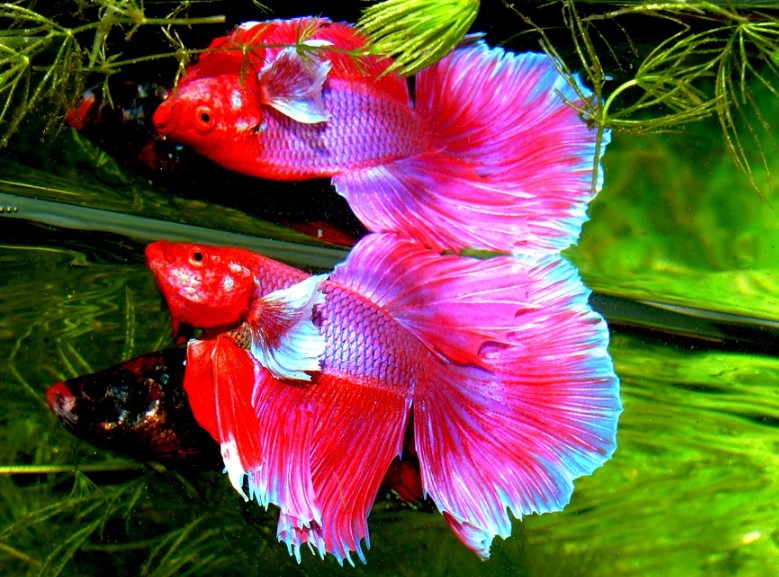How to Raise a Betta Fish – The Siamese fighting fish, more commonly known as a betta fish, is one of the most popular breeds of pet fish in the world.
They are popular because of their incredible looks, coupled with their brain that make them one of the smartest fish in the world.
When learning about betta fish care there are many topics and categories to be covered.
This article discuss betta fish care in relation to five different aspects: behavior, aquarium, food, reproduction and possible sicknesses, including how to diagnose and treat them.
1. Behavior
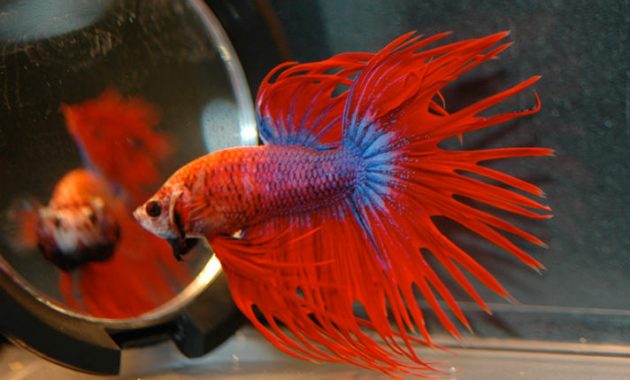
Before you can begin to learn about betta fish care, you must first understand their natural behavior so you can better understand how to take care of them.
Betta fish were native to the rice paddies of southeastern Asian counties, including Thailand, Cambodia and Vietnam.
They were soon put into captivity because of their interesting looking fins and stylish design.
One of the most interesting behaviors of betta fish is their tendency to puff out their gill covers when they are frightened. This makes them appear larger and more aggressive to other fish.
Another behavior that you should know about to help with betta fish care is the general aggressiveness of the fish.
Both male and female bettas are known to be extremely aggressive, with females fighting over pecking order in a particular family, and miles known to take bets on the fights that occur between male bettas competing for a mate.
Male bettas are even known to fight with their own reflections as seen on aquarium glass.
For this reason it is extremely important to put your male bettas in separate tanks, as it is almost guaranteed one of them will end up dead as a result of the fighting.
2. Aquarium
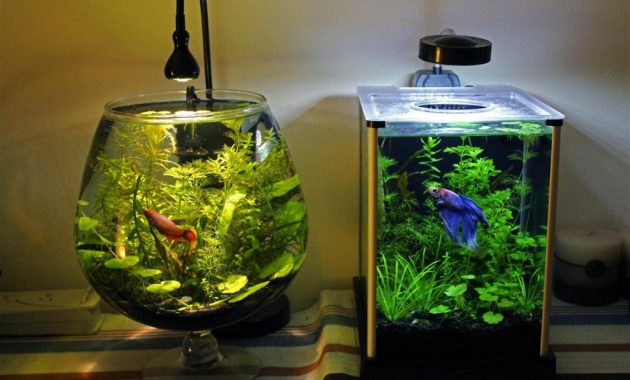
The aquarium you keep your betta in will play a large part in determining the overall health of your fish and how well they thrive and grow.
Below are several aspects of the aquarium that should be considered when striving for the best betta fish care:
- Size
A single betta fish will need at least a 5 gallon aquarium to stay healthy. Any smaller of an aquarium will cause oxygen deficiency, which can lead to a variety of health problems in your fish.
If you are going to be having multiple bettas in your tank, then it’s important to purchase a larger sized aquarium. Remember to never have two males in the same aquarium, as they will fight each other until one dies.
- Filtration
Betta fish need proper filtration to survive and grow healthy. It is recommended that you purchase a filtration system that is compatible with your aquarium and always have it running.
It is also important to regularly clean your fish tank – at least once per week to keep your betta fish healthy. Never let the tank get too dirty as it could starve your betta of precious oxygen.
- Decorations/toys
Your betta fish doesn’t need decorations or toys to survive, but it will certainly help them grow and become smarter. Popular decorations include rocks, sand, gravel, plastic shrubs and seaweeds. These emulate the natural environment of the fish, allowing them to function at a higher level.
- Heat
Your betta needs heated water if they are to survive and grow. Betta are naturally a tropical fish so having water that is too cold can stunt their growth and even kill them.
Purchasing a simple aquarium water heater and mounting it onto your tank will go a long way in ensuring your betta lives happily and healthy.
In addition, live food and plants can be added to your bettas aquarium for added nutritional benefit. Remember to still supplement your fish’s diet with betta fish food.
3. Food
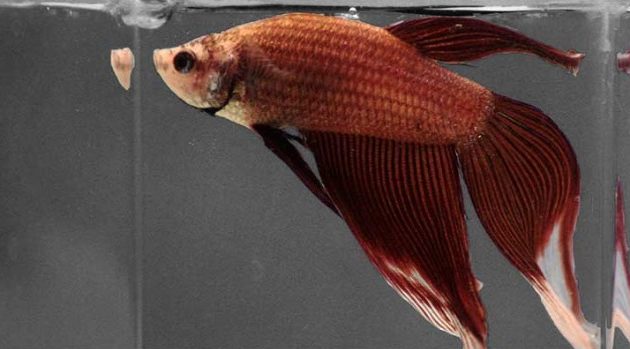
Feeding a betta fish is fairly simple. In order to give the best betta fish care, we recommend feeding your fish only fish food that was exclusively made for betta fish.
Feeding them regular fish food will suffice in a pinch, but only betta fish food contains the necessary chemicals and nutrients that a betta needs to survive and grow healthy.
In addition to feeding them fish food, you can also give them live food and plant material on occasion.
The best live or frozen fish critters to feed them are bloodworms and brine shrimp. These can be purchased extremely cheaply on a variety of e-commerce pet websites, or at most pet stores.
4. Reproduction
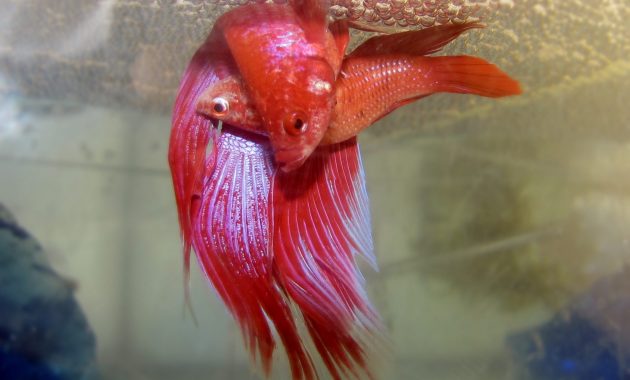
Proper betta fish care ensures monitoring your fish’s reproductive cycle, and separating male fish from each other to ensure they don’t kill each other.
Male bettas are notorious for being extremely aggressive towards each other when fighting for a female, and this aggressiveness carries over to when they are together in the same aquarium.
Having two male bettas in the same aquarium almost guarantees that one of them will be injured or killed through fighting. It is best to separate your male bettas for best betta fish care.
5. Possible Sicknesses
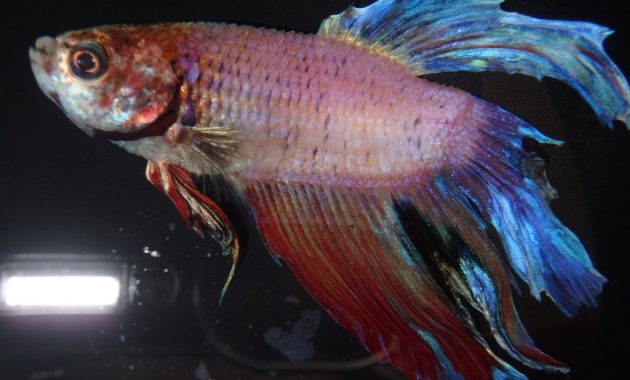
Below are three common sicknesses and their solutions to help with your betta fish care:
- Physical injury
Physical injury is common among betta fish, particularly among the males. The best remedy is changing the water and adding an antibiotic solution to the water to quicken healing.
- Fin rot
Fin rot occurs when the betta is under a lot of stress, or when the water is extremely dirty. The best thing to do if your betta is experiencing fin rot is to change their water, add an antibiotic, and reduce all possible forms of stress.
- Horizontal Stripes
Horizontal stripes on your betta indicate your fish is experiencing too much stress. Consider moving your fish’s aquarium to a less noisy environment, or take steps to reduce noise, jostling and movement of the aquarium, all of which contribute to betta fish stress.
Betta fish care is focused around five aspects of their health – their behavior, aquarium needs, diet, reproductive health and possible sicknesses. Keeping your betta healthy is easy once you understand all aspects of betta fish care.
Remember the number one preventative measure you can take to ensure your betta remains healthy is to regularly clean the aquarium, as well as ensure there is a proper filtration and heating unit setup inside the tank.
